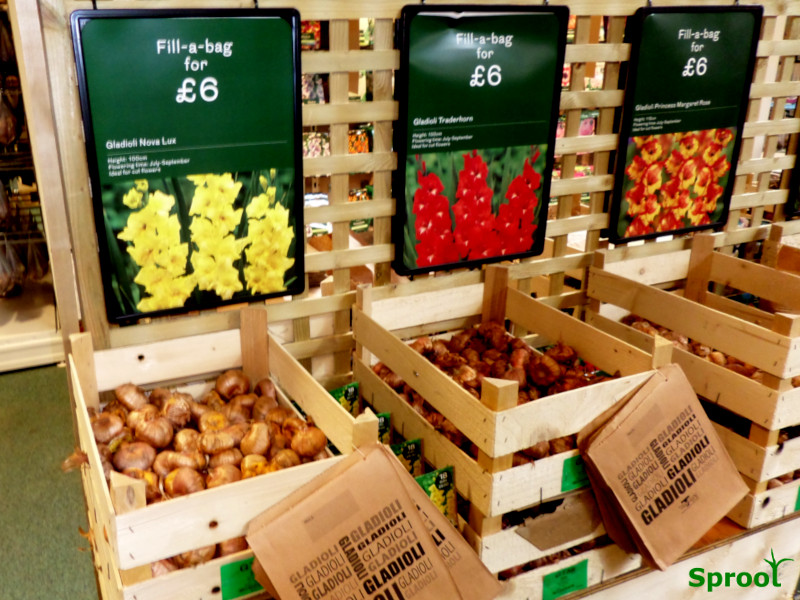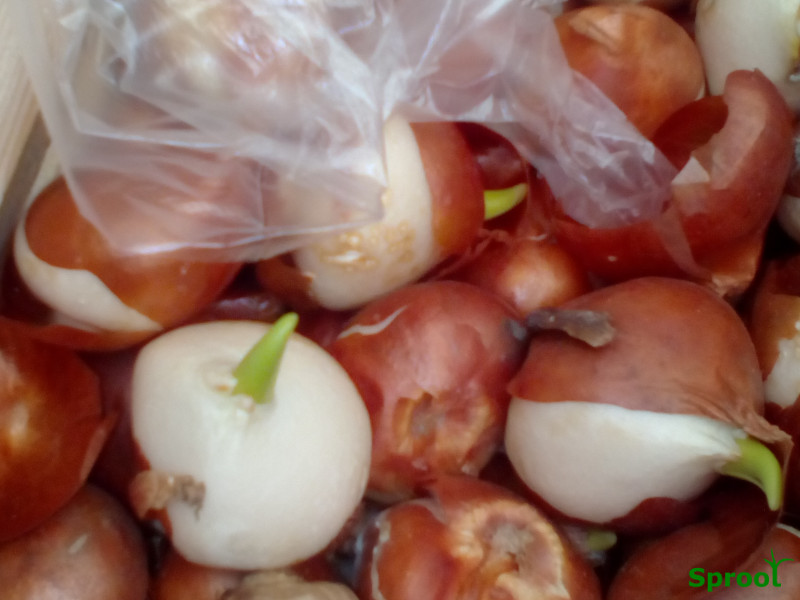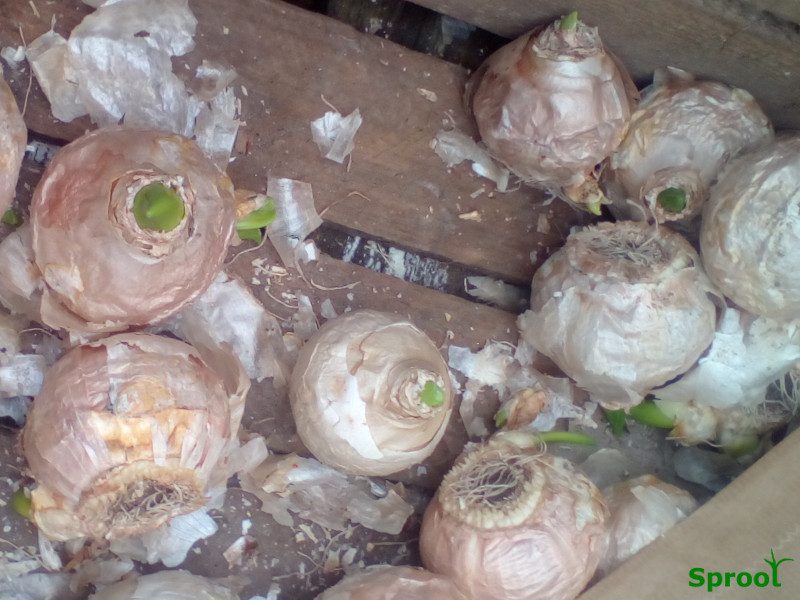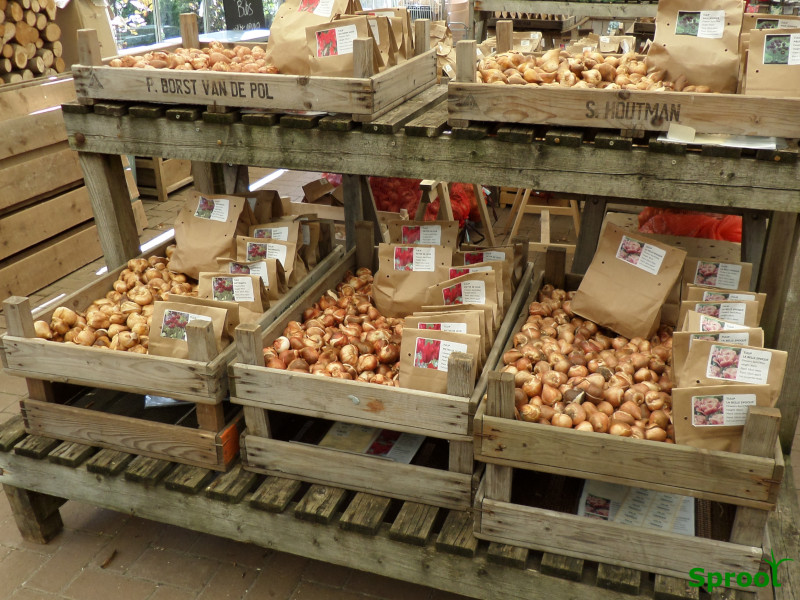Probably the easiest way to grow anything, bulbs are like nature’s perfect little packages.
When you buy a bulb, you’re getting a complete plant that’s been expertly compressed into a tiny form. Inside, it already contains everything it needs primed and ready to grow. Just plant it in the right spot, give it a bit of care, and watch as it transforms into a beautiful, blooming plant. Bulbs are a beginner-friendly way to enjoy gardening, offering a hassle-free path to stunning flowers and greenery.

Bulbs are nature’s clever solution for surviving extreme weather conditions. When a bulb has formed, it encapsulates the plant in a protective state, shielding it from cold or drought and allowing it to wait for the optimal conditions to grow again. This resilience also makes bulbs an ideal way to package and sell plants.
It’s important to understand the timing when buying bulbs:
- Spring bulbs are sold in the spring but are meant to flower in the summer.
- Autumn bulbs are sold in the autumn to bloom in the spring.
Bulbs follow a seasonal cycle. They grow, are harvested (dug up), dried, stored, packed, and then delivered to stores at different times of the year. Knowing this cycle will help you select and plant your bulbs at the right time for optimal flowering.
Types of Bulbs: Three Main Groups
Bulbs can be categorized into three primary groups based on their sales season and flowering time:
- Spring Sales
These bulbs are sold in the spring and are often referred to as summer-flowering bulbs. They are typically planted in the spring and bloom during the summer months. Examples include gladiolus, lilies, and dahlias. These bulbs are ideal for adding vibrant color to your garden during the warmer seasons. - Autumn Sales
Bulbs sold in the autumn are usually called spring bulbs, as they are planted in the fall and bloom in the spring. However, some of these bulbs can also be forced to flower for Christmas, such as paperwhite narcissus and hyacinths. Common spring bulbs include tulips, daffodils, and crocuses. These bulbs offer a burst of color after the winter months. - Indoor
This category includes indoor bulbs that can thrive indoors throughout the year. While some of these plants may also be grown outdoors during the summer, they are primarily grown inside for their decorative appeal. Examples include amaryllis and forced hyacinths. These bulbs can provide indoor color and fragrance, especially during the colder months.
Understanding these groups helps you choose the right bulbs for your gardening needs and ensures that you plant them at the appropriate time for the best results.
Spring Flowering Bulbs: What You Need to Know
Sold in the Autumn
Spring flowering bulbs are harvested in late spring and summer, then packed and prepared for sale in the autumn, typically around September and October. However, they can be sold right up until Christmas.
When you plant or water these bulbs, they begin to grow immediately, starting with root development followed by flower shoots. In practice, bulbs planted in the autumn grow roots slowly through the winter and will bloom when the weather warms up in the spring.
Temperature and Growth
The growth of spring bulbs is influenced by temperature. A cool spell encourages root and leaf development, while a warm spell and increased light trigger flowering.
Why This Matters
How bulbs are stored and sold affects their quality and flowering results. If bulbs are kept in warm, damp conditions before planting, the roots may start to grow. Without compost, they can become damaged and stunted.
Tips for Success
- Plant Quickly: The key to successful growth is to plant bulbs as soon as they are delivered.
- Keep Cool: Store bulbs outside in a cool environment to allow roots to develop properly.
- Flower Forcing: If you prefer to have flowers earlier, you can bring the bulbs inside to force them to bloom faster.
By following these guidelines, you can ensure healthy bulb growth and vibrant spring blooms.

Ideally the roots should appear before the shoots
Summer Flowering Bulbs: What You Need to Know
Sold in the Spring
Summer flowering bulbs are harvested in the autumn and then packed and prepared for sale in early spring. Unlike spring-flowering bulbs, which need to be planted immediately after purchase, summer flowering bulbs offer more flexibility regarding when to plant.
Planting Timing
Summer flowering bulbs thrive in warm conditions, and some varieties actually require plenty of warmth to kickstart their growth. This flexibility allows you to choose when to plant them based on your specific conditions:
- Warm Greenhouse or Conservatory: If you have access to a warm greenhouse or conservatory, you can pot up your summer bulbs early. This provides a controlled environment to protect your plants and help them grow, so they’re ready to be planted outside when the weather warms up.
- House or Cold Greenhouse: If you only have a house or a cold greenhouse, you can plant your bulbs later in the season. Timing your planting carefully will ensure that you can safely move them outside when conditions are favorable.
By adjusting your planting schedule based on your environment, you can optimize growth and ensure a beautiful display of summer blooms.
Indoor Bulbs: Key Information
Selling Season
Indoor bulbs don’t have a specific main selling season and can be sold year-round. However, they are often available alongside spring and autumn bulbs, providing options for year-round enjoyment.
Planting and Care
When planting indoor bulbs, it’s important to follow the specific instructions provided, as requirements can vary. Generally, indoor bulbs need warmth to stimulate growth. Here are a few tips for successful indoor bulb cultivation:
- Warmth: Ensure that your indoor bulbs are placed in a warm environment to encourage growth. Most indoor bulbs require temperatures that simulate their natural growing conditions to thrive.
- Space: Make room for your indoor bulbs. They will need a suitable spot in your home where they can receive adequate light and warmth.
By providing the right conditions and following care instructions, you can enjoy a delightful display of indoor bulbs, enhancing your living space with vibrant blooms or lush foliage throughout the year.
How to Buy Bulbs
When bulbs are harvested and stored, they are kept under very controlled conditions to ensure they remain dormant and in optimal condition. Growers manage temperature and humidity precisely to keep bulbs perfect for planting.
Challenges in Store
Once bulbs reach retail stores, they may not be kept in ideal conditions. Fluctuating temperatures and humidity can trick bulbs into thinking that spring has arrived, causing them to start growing prematurely or even drying out and shriveling.
Buying Tips
- Buy Early: To ensure the best quality, purchase bulbs as soon as they arrive in the store. This minimizes the risk of them being exposed to less-than-ideal conditions.
- Inspect Carefully: Check bulbs for signs of growth or damage. Healthy bulbs should be firm and dry with no visible signs of sprouting or shriveling.
- Store Properly: If you can’t plant bulbs immediately, store them in a cool, dry place to prolong their dormancy until you’re ready to plant.
By buying bulbs early and handling them with care, you’ll increase your chances of successful planting and beautiful blooms.

Buying and Storing Bulbs: Key Tips
Spring-Flowering Bulbs Sold in the Autumn
- Plant Immediately: These bulbs should be planted as soon as possible to ensure they have the best chance of growing and blooming successfully.
- Alternative Storage: If you can’t plant them right away, store them in a cool, dry area. Check them regularly for signs of problems like sprouting or drying out.
Summer-Flowering Bulbs Sold in the Spring
- Flexible Timing: You can store these bulbs until you’re ready to plant them later.
- Proper Storage: Keep them in a cool, dry area and check periodically for issues. This will help maintain their quality until you’re ready to plant.
Buying Tips
- Packaged Bulbs: Many bulbs are sold in packs with colorful pictures, and are often secured in plastic bags to help protect them from drying out. However, this packaging can make it difficult to inspect the bulbs’ quality.
- Check Temperature: The temperature where bulbs are displayed affects their quality and shelf life. Ideally, bulbs should be kept cool, but they are often displayed in shops or greenhouses that are too warm and dry.
- Avoid Premature Growth: If you notice bulbs with green shoots or roots while shopping, it’s best to avoid purchasing them as this indicates they may have been stored improperly and could be less viable.
By following these tips, you can ensure you select healthy bulbs that will thrive in your garden.

Buying and Storing Bulbs: Essential Tips
Promotional Bulb Packs
- Storage Concerns: Large promotional bags of bulbs are often sold, but they should ideally be stored in shallow layers with good air circulation. This helps prevent issues like rot and ensures the bulbs stay in good condition.
- Buy Early: Purchase bulbs as soon as they arrive in the store to ensure they are fresh and have not been subjected to poor storage conditions.
Handling Large Packs
- Immediate Planting: If you buy a large pack of bulbs, plant them as soon as possible to prevent them from deteriorating.
- Alternative Storage: If immediate planting isn’t feasible, unpack the bulbs and store them in open crates or boxes to allow for proper air circulation and prevent mold or rot.
Bulb Grading
- Size Matters: Bulbs are graded after harvest into internationally agreed sizes, which should be indicated on the label. Larger bulbs generally produce more or larger flowers, offering better value for money compared to smaller bulbs.
- Label Information: Pay attention to the size grade on the label to ensure you get the best quality and value for your gardening needs.
By following these guidelines, you can ensure you’re purchasing and storing bulbs effectively, leading to healthier plants and more vibrant blooms.

